Methods for extraction of proteins
Once a promising source material has been identified using the activity assay, thenextstepis toextracttheprotein from this source.Theobjectiveinextractingproteinsis togetthem from thesite where they occur in the tissue, into solution wheretheycan be more easily manipulated and separated out.Most tissue proteinsoccur within cells, and possibly within organelles in thecells, and in thesecases it is necessary tobreak open the cells and organelles, to release their protein contents.Themethodschosentodisruptthecellsandorganelles should be such that the proteins themselves are minimally damaged. If thedesired proteinoccurswithinanorganelle,thenauseful purification of the protein may be achieved by a sub-cellular fractionation, whereby the different organelles are separated, before the protein is extracted from the organelle.
1. Osmotic shock
A useful technique, which may be used in conjunction withmechanical
means of disrupting cells, is theuse of a buffer with a low osmotic pressure. In such a buffer water will tend to flow into the cells and organelles by osmosis, promoting their lysis and releaseof their proteins.
To further promote the disruption of cell membranes, a low concentration of organic solvent, e.g. 2% n-butanol, is often added to the extraction buffer.
Laminar flow. A number of the homogenizers described below are dependent on the principle of the laminar flow of fluids for their operation. Laminar flow may be illustrated by taking a sheaf of paper sheets and throwing them onto a stationary surface. It will be observed
that the bottom-most sheet of paper travels the smallest distance andthe top-most sheet travels the greatest distance, due to the friction between the layers.
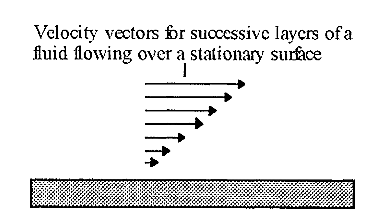
Figure 1. Laminar flow of a fluid.
Fluids, which may be liquids or gases, flow over stationary surfaces in a similar way; the layer of fluid againstthesurface(theso-called boundary layer) is virtuallystationaryrelativetothesurface and successive layers travel at increasingly greater speeds.
An everyday example of the effects of laminar flow is the well-known
phenomenon that one is voice can be heard to a greater distance downwind, than upwind.The speed of soundis about1000kph,whichis high relative tocommonwind speeds, so thephenomenonis notdue to the wind speed itself.Rather,thelaminar flow of thewind distortsthe sound waves, causing themtobend upwards intowind,anddownwards downwind (Fig.2),so thatthesound will be heard at greaterdistances, downwind.
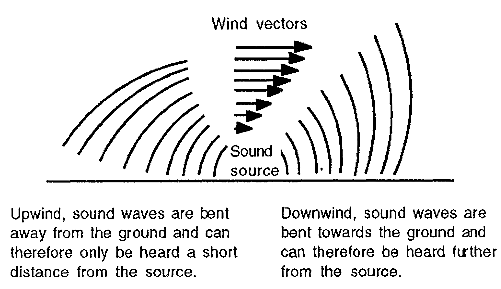
Figure 2.The effect of the laminar flow of the wind upon sound waves.
Pilots of light aircraft with slow flying speeds, have to be especially conscious of the effects of laminar flow when landing.Landing is always
done into wind to reduce thespeed relative to the ground but, as the aircraft descends its airspeed will decrease and it may be necessary to compensatefor this by applying power or by approachingwithextra speed. Pilots get information about the wind from the windsock, which indicates the wind direction and strength.
2. Pestle homogenizers
An effective and gentle method of disrupting animal cells is by theuse of apestlehomogenizer,of whichtherearetwomaintypes,Dounceand Potter-Elvehjemem homogenizers. Pestle homogenizersgenerallydisrupt whole cells but not organelles.
The Dounce homogenizer consists of a cylindrical glass tube, closed at one end, and two pestles (pistons) which fit intothecylinder with different clearances.Tissue is cut intosmall cubes, placed in the homogeniser with buffer and the “L”(loose)pestleis used first,tobreak the tissue intoa fluid mixture.The “T”(tight)pestleisthenusedto disrupt thecells, releasing theircontents.Typically,homogenizationis effected by a defined number of “passes”of thepestle,upanddown the cylinder. Care should always be taken to support the end of the homogenizer against thebench,when it is being used, so thattheendis not broken off by the hydraulic pressure within the cylinder.
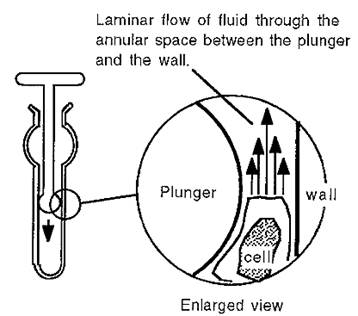
Figure 3.A Dounce homogenizer.
In a Dounce homogenizer, laminar flow of the fluid throughthe annular space between thepestleand thehomogenizerwall resultsin different fluid speeds existingover thediameter of thecell, and the resulting shear forces disrupt the cell (Fig.3).
A Potter-Elvehjemem homogenizer works in a similar way, except that the pestle has a more cylindrical shape, which induces shear forcesover a greater area.Potter-Elvehjemem homogenizers are available in automated, motorized versions.
3. The Waring blendor and Virtis homogenizer
These devices consist of a high speed stirrer with cutting blades,
mounted in a glass vessel, the walls of which are indented fromtopto
bottom, forminga clover-leaf crosssection.Thespeed of theblades’
motion generates strong shear forces, due to laminar flow, while the irregular outlineof thevessel gives good overallmixingof thesolution. The degree of disruption depends upon the speed of rotation of the blades. At high speeds, a blendor will disrupt mitochondria and nuclei and may even denature proteins.it is mostly used with plant and animal
tissues but is less effective with micro-organisms. Note that although it is a blender,the trade name is Waring blendor.
4. The Polytron/Ultra-Turrax-type homogenizer
Polytron andUltra -Turrax aretrade names for a type of homogenizer which consists of a stationaryverticaltube,equipped with serrated teethand radially distributed holes atitslower edge.Fitting closely into the stationary tubeis a motor-driven tube, also with radially distributed holes corresponding to those on the stationary tube.
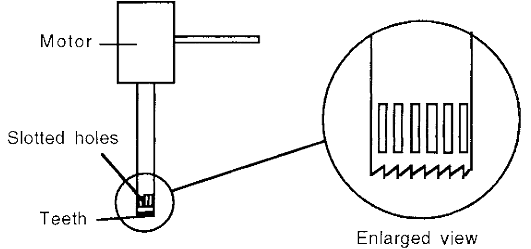
Figure 4. The Polytron/Ultra-Turraxtypehomogenizer.
Rotation of the inner tube causes the sample to be flung outwards, through the holes in the tubes.Because the two sets of holes continuously and rapidly come into and out of register, thesample gets chopped intosmall pieces and simultaneouslyhomogenizedbyshear between therotatingand stationarytubes.Such homogenizersarevery effective and only a short period of homogenizationis required, the
sample being cooled in an ice bath during this period.
5. Grinding
Several types of apparatus are availablefor grinding.in theEdmund-Buhler disintegrator,bacterialcells are vibrated with glass beads in a jacketed container.Cells are broken by impact,tearingandmaceration between thehard surfaces.Toavoid heating,coolingliquid is circulated through the jacket.
6. The Parr bomb
In theParr bomb, thesample is subjected tonitrogen gas under very high pressure.Under theseconditions,thenitrogendissolves in thecell fluids. When the pressure is released, the explosive generation of nitrogen bubbles causes disruption of the cell, and less frequentlyof organelles.
7. Extrusion under high pressure
In an apparatus such as the Frenchpressurecell(Fig. 5),cells are
broken by extrusion through a narrow orifice at pressures of up to 8,000 p.s.i.Laminarflowcausesintenseshearingforceswhichdisrupt the cells as they pass through the narrow orifice of the needle-valve.
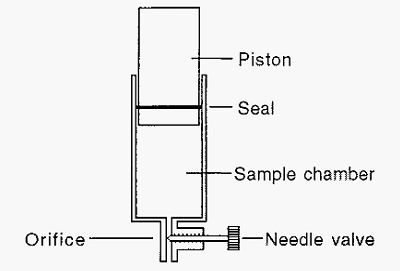
Figure 5.A French pressure cell.
Needle valves. Needle-valves arc devices used to adjust or regulate the
flow offluids.Theyconsistofa tapering“ needle”,witharoundcross-section, whichfits into acorresponding round hole, called a“jet”.When the needle is retracted slightly from the jet, an annular gap is formed, between the needle and the jet, and fluid can flow through this gap. Thecross-sectional area of the annular gap can be altered by adjusting the degree to which the needle is retracted from the jet. An every-day application of needle-valves is in carburettors, where they are used to control the flow of petrol and air, toensure a correct mixture of the two.Adjusting the needle-valves is one of the steps involved in “tuning”a carburettor.
8. Sonication
Application of high frequency sound waves is an effectivemethod of cell breakage which can be appliedtomicro-organisms. The mechanism is thoughttoinvolve“micro -cavitation”, i.e.theproductionofvery
local transientpressure differences, which break cell walls.The efficiency of cell breakageis influenced by thepower outputof the instrument, the duration of exposure and the volume of material processed.In general, the volume which can be treated in a given timeis
not great - not as great,for example as that using high pressure extrusion.
Cooling is necessary to prevent the build-up of heat.
Micro-cavitation. Theformationof a bubble of vapourina liquid, due
to a local reduction in pressure to below thevapour pressure of theliquid at that temperature,is knownas “cavitation”.For example,in thecase of a boat propeller,thereis a pressuredifferentialoneithersideof the blades - low pressure in front and highpressureattheback.If toomuch power is applied. the pressure in front becomes too low and the water vaporizes.The propeller then spins in the vapour bubble formed, without generating thrust. “Micro-cavitation,” is caused by the formation and collapse of very smallbubbles of vapour in theliquid, due tothepassage of sound(pressure)waves.Micro-cavitation can beverycorrosiveandis a major cause of the erosion of ships’propellers,for example.
9. Enzymic digestion
Enzymes providea verygentleand specific means of disrupting cells
to release their contents.For example,thecell walls of bacteria may be
digested with theenzyme,lysozyme.Similarlyplantcellwallsmaybe digested with cellulases and fungal cell walls with chitinases.
References
Dennison, C. (2002). A guide to protein isolation . School of Molecular mid Cellular Biosciences, University of Natal . Kluwer Academic Publishers new york, Boston, Dordrecht, London, Moscow .
 الاكثر قراءة في عزل البروتين
الاكثر قراءة في عزل البروتين
 اخر الاخبار
اخر الاخبار
اخبار العتبة العباسية المقدسة


